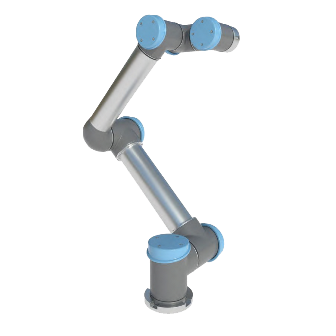Welding automation has exclusively involved removing human welders and replacing them with six-axis industrial robots to convert manual welding applications to automatic ones. However, not every welding application is suitable for automation with only robots and not every manufacturer can afford to invest in a robotic welding system. Welding automation of the past was not feasible for every manufacturer as they were forced to choose between either manual or robotic welding with no options in between. Fortunately, there is a new form of welding automation that is here to solve this issue, and that is collaborative welding.
Collaborative welding refers to the combination of both human and robotic labor to execute welding applications. Instead of articulated robots, collaborative welding involves collaborative robots or cobots. Collaborative robots are designed to work alongside or directly with humans. They feature smaller footprints, lighter masses, and rounder edges than their traditional robotic counterparts along with enhanced safety sensors. These industrial robots can operate around humans without any barriers. When potential contact is sensed by the Universal UR5 and other cobots, they will immediately slow or stop their operation to avoid damage or injuries. Collaborative robots have mainly been used for material handling automation but now they are being deployed for welding.
Due to the smaller size of collaborative robots, they are mainly being used to assist or supplement manual labor for arc welding applications. GMAW applications are the most common for cobots. They can also be used for GTAW, plasma, and laser welding applications.
Like traditional welding robots, cobots are integrated with a welding torch for the end-effector in order to execute a welding process. Unlike traditional welding robots, safeguarding equipment is not needed since collaborative robots can safely operate around people. In addition, other robotic welding equipment such as specialized fixturing is not needed. Collaborative robots can weld workpieces using basic jigs and clamps along with standard welding tables. The reduction in excess equipment helps to keep the cost of collaborative welding down. This makes collaborative welding a cost-effective alternative to traditional robotic welding.
Collaborative robots from FANUC, Yaskawa Motoman, and Universal are being used for welding automation. The FANUC CR-15ia is one of several cobots form top robotic manufacturer FANUC. While Universal exclusively manufacturers collaborative robots. The CR-15ia can be used to complete welding processes.
Collaborative robots can boost productivity by supplementing labor. They can automate more repetitive jobs such as high volume welds while welders can focus on customized projects that are one time jobs. Productions can be setup so a collaborative robot can weld on one side of a workstation and workers on the other can load and unload parts preventing any idle time. Cobots can quickly be reprogrammed and redeployed for new projects with their intuitive programming. Simply guiding the arm of the Universal UR10 through the steps of a welding process is all that is needed to program it. Anyone can operate a collaborative robot, making it easy to implement and use. With welding cobots manufacturers can quickly meet product demands, adapt to changes, and increase output without the additional cost of adding more labor.
Robots Done Right |
Used Robot Sales |
Collaborative Welding

Robots Done Right is the place to start when it comes to used robots. Contact us if you are interested in buying or selling your used robot.